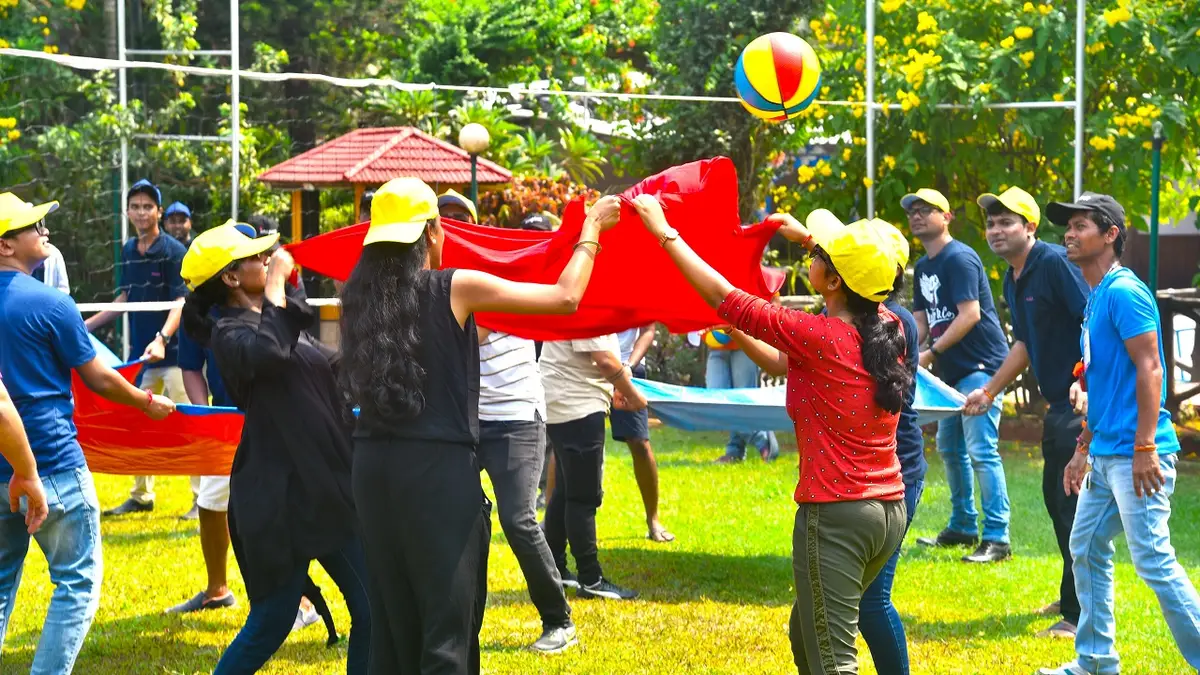Benefits of Team Outings: Building Stronger Teams and Happier Workplaces

In today’s competitive business landscape, employee engagement is more critical than ever. A motivated and engaged workforce not only increases productivity but also fosters a positive company culture. One effective way to boost employee engagement is through team outing activities that provide an opportunity for team members to bond, relax, and have fun outside the office.
What is a Team Outing?
A team outing is a planned event or activity organised by a company or team leader to bring employees together outside the workplace. It aims to promote team bonding, relaxation, and employee engagement. A team outing is like a special day when people from work go somewhere fun together. It’s a bit like a school field trip, but for grown-ups.
The goal is to have a good time and get to know your coworkers better, outside the usual office or work setting. You might do fun activities, eat good food, or just relax together. It’s a way for everyone to bond and have a break from work.
Why are Team Outings Important?
Why team outings are important? because they help people who work together become better friends. When you like the people you work with, you do your job better and feel happier. Team outings are like playtime for grown-ups.
They give you a break from work, help you understand your coworkers better, and make you feel more comfortable with each other. This helps the team work together better, like a sports team that practices and plays well together.
So, team outings are important because they make work more enjoyable and teamwork stronger.
How Often Should a Team Have Outings?
The frequency of team outings can vary depending on the company culture and resources. Some teams have outings quarterly, while others may have them annually. The key is to strike a balance between regular bonding opportunities and work demands.
What are Some Exciting Team Outing Activities & Ideas that are Sure to Reinvigorate Your Workforce?
Imagine a day of growth and connection, where a dynamic mix of employees from various roles and hierarchies come together. Their mission: to strengthen their bonds and learn through shared experiences.
This exciting journey unfolds with a backdrop of team-building activities, set in motion by ice-breakers, energizers, and a dash of friendly competition as teams form.
The heart of the day lies in three engaging activities:
Blind Shepard
Participants embark on a journey of trust-building and communication, where reliance on one another is paramount.
In this game the Participants are divided into pairs, with one person blindfolded and the other serving as their guide . The blindfolded participants are given a soft object, like a plush toy or a ball, which represents a lost sheep.
The blindfolded shepherds must rely solely on the verbal instructions provided by their partner (the sheepdog) to locate and retrieve their “lost sheep”.
The partners guide their blindfolded shepherds through an obstacle course or a designated area, helping them locate the “sheep.”
Effective communication is vital, as the shepherds must trust their partner’s directions to find the sheep without being able to see.
Debrief about activity
After the activity, participants discuss the importance of trust and communication in their workplace. They reflect on how these skills can be applied to improve teamwork and problem-solving.
Poly Volley
This challenge demands seamless coordination and collaboration. Teams must strategize and work together to succeed.
It’s like a Volley-ball game. It is played only with plastic sheets to catch and throw the ball in, competitors’ court side. Participants are divided into teams with a clear objective: to keep a ball using only sheets. The teams must work together to keep the ball in the air for as long as possible without it touching the ground.
Debrief about activity
After the activity, participants discuss the importance of coordination and collaboration in achieving common goals. They explore how these skills can be applied in their daily work, particularly in project teams and group tasks.
Participants must strategize and communicate effectively to ensure that they don’t drop the ball. This activity demands quick thinking, coordination, and teamwork, as each team seeks to outperform the others.
Stamp It Activity
The playing area has small cards marked with numbers from 1 to 50 (or any desired range) scattered randomly on the ground. Participants are given a time limit to find and stamp on as many numbers as they can. They can use their feet to stamp on the numbers.
The goal is to find and stamp on as many numbers as possible within the given time frame. Participants should aim to stamp the numbers in ascending order, starting from 1.
Debrief about activity
Participants discuss the importance of process orientation, quick decision-making, and learning from their mistakes. They reflect on how these skills are applicable in their work environment.
As the day progresses, participants engage in reflective debrief sessions. They discuss their observations and uncover ways to apply these newfound insights back in their office roles.
But the most creative and impactful part is yet to come. Teams represent their key learnings through a ‘Big Picture Activity,’ infusing fun into the application of lessons learned. It’s not just a summary; it’s a tangible takeaway.
This employee activity is a powerful blend of camaraderie, experiential learning, and personal growth—a day to remember, connecting work and play for a stronger, more inspired team.
Why Team Outings Matter for Employee Engagement?
Team outings play a significant role in boosting employee engagement. They allow employees to:
Relax and Recharge: Team outings provide an opportunity for employees to recharge their batteries and return to work with renewed energy.
Build Trust: Collaborative activities and shared experiences foster trust and camaraderie among team members.
Enhance Communication: Team outings encourage open and informal communication, helping team members get to know each other on a personal level.
Boost Morale: Fun outings and engaging activities boost team morale and overall job satisfaction.
In conclusion, team outing activities are not just a break from the daily grind; they are essential for maintaining a motivated, cohesive, and engaged workforce. By incorporating a variety of team outing ideas, you can foster a positive work environment and ultimately improve your company’s bottom line. So, don’t hesitate to plan your next team outing and watch your team thrive!




